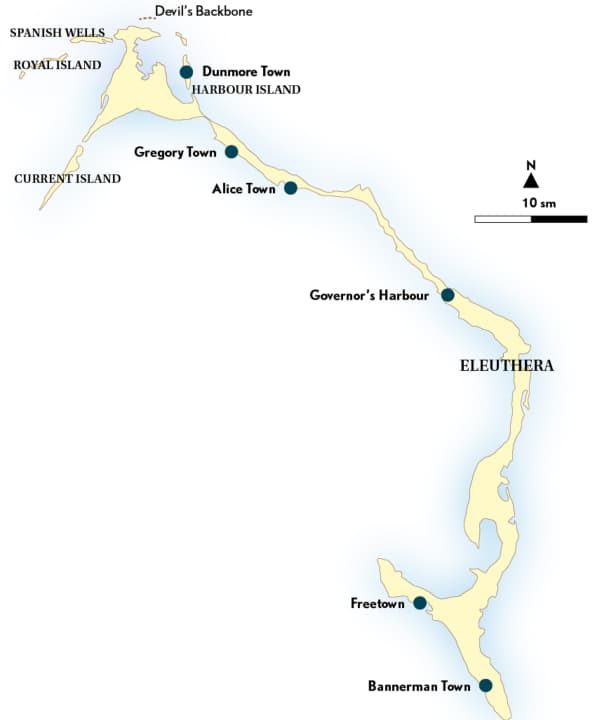Territory portrait Bahamas: Eleuthera bears witness to colonial heritage
Johannes Erdmann
· 07.02.2024






The first settlers on Eleuthera were pilgrims who came from Bermuda in 1648 and stranded on the reef off the northern coast, initially living in caves. Later, several colonies were established on Spanish Wells, the island that was once used by Spanish treasure fleets on their way to Europe to replenish their water provisions. Dunmore Town on Harbour Island and Governor's Harbour in the middle of the islands also bear witness to this era. There are no charter bases on Eleuthera, which is why it is initially 30 nautical miles from Nassau to Royal Island. The main island extends in a crescent shape over a good 100 nautical miles to the south-east. Sailing here is sheltered and there are numerous good anchorages, although there are no mooring buoys anywhere.
The islands were considered to be very fertile, which encouraged American investors to cultivate pineapple plantations in the 1950s. When the Bahamas declared independence in 1973, the USA levied high taxes on the fruit in order to protect its own farms in Hawaii. The "Pizza Hawaii" would almost have been called "Pizza Eleuthera". Today, the plantations are overgrown.

To get from Spanish Wells in the west to Harbour Island, you have to pass Devil's Backbone, the reef on which the Pilgrims were stranded. The five-mile passage is only possible in calm seas, as the fairway extends to the reef on the port side and the beach lies on the starboard side. Harbour Island is famous for its beach, which glows pink due to the light refracted by the crushed shells and coral.
If there are too many tourists here, you can also marvel at the phenomenon further south at Governor's Harbour. There is an abandoned US Navy base there that you can explore. If you charter for a fortnight, you can easily return from the southern tip of Eleuthera via Staniel Cay and the lonely Exumas.
